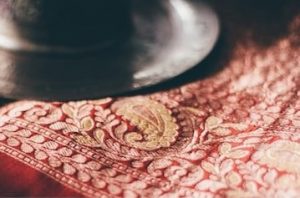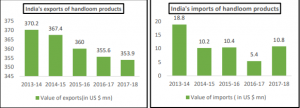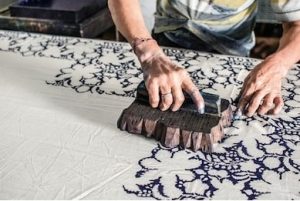
The Indian khadi garments, stitching, embroidery industry is one of the oldest and largest cottage industries in India with a long custom of excellent artistry, representing and conserving the vivacious Indian culture. The textile sector is presently projected at around $ 150 billion and is anticipated to reach $250 billion by 2019. The industry’s industrial setup is second largest in the world, following China. The industry has an installed capability of 512 lakh spindles, 0.68 lakh looms, 8.6 lakh rotors, 25.23 lakh power looms and 23.77 lakh handlooms.
According to NIIR PROJECT CONSULTANCY SERVICES (NPCS), the potential size of the Indian textiles and apparel industry is expected to reach $223 billion by 2021.
Related Project: - Textile Bleaching, Dyeing, Printing and Finishing, Textile Auxiliaries Projects
Handcrafted Revolution Embracing Handloom: -
The Indian handloom industry produces 13 percent of the entire cloth formed in the nation and out of the whole handloom created, 16 percent is exported. The export of handloom goods from India was esteemed at $ 343.69 million in FY19. In FY20 the export stood at $ 226.05 million.

The handloom products export between from April to October 2020 was $ 110.76 million. In FY19, the US was the major importer of Indian handloom products, with an estimated purchase of $ 93.94 million, followed by the UK, Italy and Germany at US$ 17.77 million, US$ 16.47 and US$ 14.65 million, respectively.
Related Videos: - Textile Industry
Guidelines to for Promoting Sustainable Growth of Handloom Industry: -
ü Focus on quality standards: - Consumers at international markets are mostly subtle to good quality products.
ü Leverage e-commerce platforms: - E-commerce platforms must be used to upsurge the outreach to newer patrons and arcades.
ü Introduce new design elements: - While preserving the traditional designs, there is a need to concurrently advance with the time.
ü Promote handloom mark: - The Handloom Mark, which is a pointer of high-quality goods should be broadly indorsed as it can help in realising premium prices for handloom products.
Block Printing Market Dynamics: -
Block printing is a type of woodcut printing used on various types of fabrics to create amazing patterns and designs on them. The fabrics which get usually used for this type of printing include linen, cotton and silk. It is traditional art form of India which mainly gets practised in the places of Gujarat and Jaipur. It is quite a colourful art form which looks extremely beautiful when crafted on clothes, bedcovers, table cloths and much more.

The global printed textile market size was projected at USD 146.5 billion in 2018 and is estimated to register a CAGR of 8.9% over the forecast retro. The fluctuating consumer inclinations concerning to the espousal of printed textiles in the Asia Pacific and the Middle East is anticipated to have a positive influence on market growth.
Related Book: - The Complete Technology Book on Textile Spinning, Weaving, Finishing and Printing
Outlaying into Digital Printing: -
The digital printing market is projected to raise from USD 21.08 Billion in 2016 to USD 28.85 Billion by 2023, at a CAGR of 4.48% between 2017 and 2023.Major drivers for the arcade are the rising demand for sustainable printing, advancement of packaging and textile industries, and decrease in per unit cost of printing with digital printers. The market for digital textile printing market is expected to grow considerably during the forecast period. Increasing suppleness, low cost per device, and emerging technology are expected to help the industry expand amid looming digitization for conventional printing service providers. The major players in the market include Durst, Electronics for Imaging (EFI), Konica Minolta, Kornit Digital, Mimaki, ROQ International, Sawgrass Technologies, Seiko Epson, SPG Prints, M&R, etc.

Conclusion: -
Niir Project Consultancy Services (NPCS) provides various project reports on different segments. Not only the present market scenarios but also future market overawe is also shared in the report. For the further requirement of business investment in projects like these, kindly contact Niir Project Consultancy Services (NPCS).
DD_Art2021
Tags:-
#DetailedProjectReport #businessconsultant #BusinessPlan #feasibilityReport #NPCS #industrialproject #entrepreneurindia #startupbusiness #BusinessIdeas #StartupBusinessIdeas #BusinessOpportunity #TextileIndustry #khadiIndustry #handloomBusiness #handloomProduction #BlockPrinting #TopBusinessIdeas #ProfitableBusinessIdeas #ProductionIndustry #ManufacturingUnit #StartupIdeas